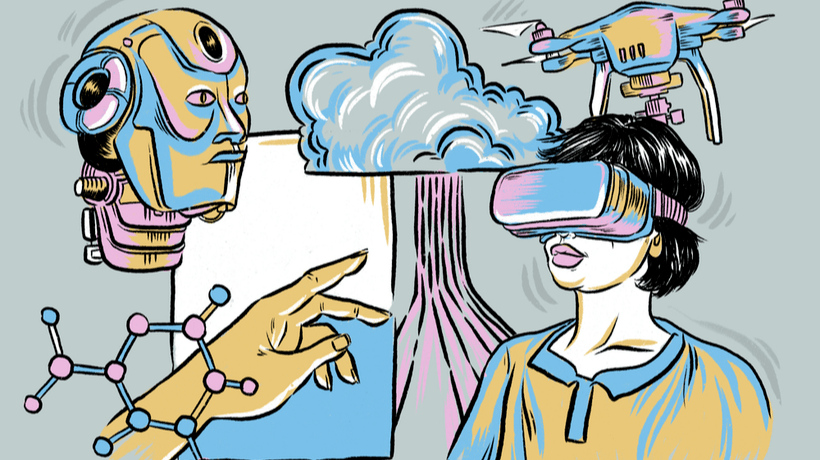Disrupt The Disruptors: One Of The New Challenges
Examining where we are today and where we are likely to go in the next few years, one thing became quite clear. What is clear is that a suite of new and emerging technologies is now on the horizon. As they advance, become more adopted and grow, the overall magnitude of change will become much more impactful. Seventeen of the rapidly emerging technologies modeled are projected to create a combined market of nearly $7 trillion USD in 2025. To put that in perspective, that is greater than all but two of the annual gross domestic products (GDP) of countries. Not only will the impact grow, the resulting changes will amplify the impact on many if not most aspects of our personal and professional lives. This creates unique opportunities for organizations large and small as well as nearly every professional in the workforce today.
New And Emerging Technologies
Innovative organizations and individuals have the opportunity to excel during this coming period of time. According to McKinsey’s Global Innovation Survey, “Although 84% of executives agree that innovation is important to growth strategy, only 6% are satisfied with innovation performance.” We have already begun to see the early adoption of many of the new and emerging technologies. Individually and combined, they have begun to result in disruptive innovation. The growing application of these new and emerging technologies has the ability to affect the overall performance and operational status of individuals and organizations as well as the market(s) in which they work.
There is no doubt that the short and near-term future is digital. The innovative disruption of going digital is an extremely valuable opportunity. It creates new possibilities for core business functions as well as the professionals involved in those functions. Along with the opportunities created by these new possibilities come the challenges they create. Consider the huge challenges these new technologies and business functions create for HR. If finding properly skilled human resources was not a big enough challenge already, think how much harder it is finding properly skilled staff in the new and emerging technologies. Now consider looking for properly educated resources with experience!
A very interesting development began to appear about six months ago. I call it disrupt the disruptors. This looks at the current path forward, examines the fundamental constructs and identifies a construct that a strategic concept could disrupt. The integration of multiple emerging technologies working interactively and their combined capabilities are the strategic concept that commonly disrupts the disruptors. In this rapidly evolving emerging technology domain, 5 years is way too long of a period of time for your "disrupt the disruptors" strategy. Do it now.
My focus is and has been on the early transition of new and emerging technologies from university research programs and initiatives into real-world value-driven application and the creation of commercial products and markets. What is currently on the technology radar screen is arguably greater than what we saw happen in the Internet era of the mid to late 90s when I was Chief Strategist at Netscape. Recent experiences suggest that while many organizations and individuals talk a very good game when it comes to innovation, few actually have a well-thought-out game plan. Further analysis indicates they have not considered the potential for the disrupt the disruptors implication.
5 Strategic Insights
Moving forward and adapting to disruptive innovation opportunities created by new and emerging technologies requires a forward-looking view. Here are a few pieces of strategic insight:
- Adapting far faster than we ever have done before is a necessity. This is by far one of if not the greatest challenge for organizations and professionals.
- Preparing and positioning yourself or your organization for disruptive innovation is as much part art as it is part science.
- As an executive or other member of management, it is a must that you determine how you will sustain growth and or achieve advancement in this period of innovative disruption.
- Changing current educational models are of strategic importance and a must. The models will need to address continuous education. Currently, that requires increased investment for development.
- Integrating augmented virtual reality into your organization and your professional skills and abilities will become a must for most. This requires new skills that are just now being defined.
Those five elements combined interact and create the environment that the vast majority of professionals and organizations must position themselves to operate within. The time is short and running out quickly. The difference between winning and failing may likely depend upon you addressing the need for that knowledge now. With that knowledge, preparing for what remains ahead will be within your reach. The clock is ticking.









